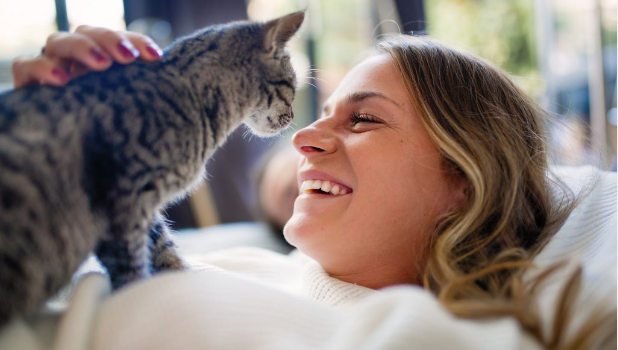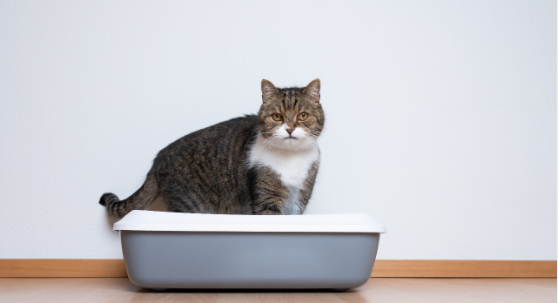What Do Cats Think When We Meow at Them?
Communication is the key to any strong relationship, and this is no exception when it comes to our bond with our feline friends. In this article, we will explore the intriguing world of cat-human communication, focusing on what cats think when we meow at them. By understanding feline thoughts and behavior, we can develop a deeper connection with our beloved pets. What do cats think when we meow at them? Read on and find out.
How Cats Communicate with Humans
Cats employ a variety of methods to communicate with humans, including vocalizations, body language, and scent marking.
A. Vocalizations
Cats use different sounds to convey their emotions and desires:
- Purring – Often associated with contentment and relaxation
- Chirping – A friendly greeting or a way to get your attention
- Hissing – A warning to indicate fear, anger, or discomfort
B. Body language
Cats express themselves through subtle physical cues:
- Tail movements – A high, straight tail indicates happiness, while a low or tucked tail signifies fear or submission
- Ear positioning – Ears pointed forward suggest curiosity, whereas flattened ears can indicate fear or aggression
- Eye contact – Direct eye contact can be a sign of trust, while a slow blink often represents affection
C. Scent marking
Cats mark their territory and establish a sense of familiarity by rubbing their scent glands (located on their cheeks) on objects and people.
Do Cats Understand Human Meows?
Although cats may not fully comprehend human attempts to mimic their meows, they can often recognize the intent behind them. Studies have shown that cats are more likely to respond to vocalizations from their owners than from strangers. Expert opinions suggest that while cats may not grasp the exact meaning of a human meow, they can still pick up on the emotional tone and context.
What Cats Think When We Meow at Them
A. Familiarity with the person meowing
Cats are more likely to respond positively to human meows if they have a strong bond with the person making the sound. Familiarity plays a significant role in how a cat perceives and reacts to human vocalizations.
B. Recognition of the intent behind human meows
Cats can often discern the emotional intent behind a human meow, such as playfulness, affection, or concern. This ability allows them to gauge how they should respond to the sound.
C. The role of context and tone in cat-human communication
The context in which a human meow occurs and the tone of the sound can greatly influence a cat’s reaction. For example, a playful meow during a relaxed moment is more likely to elicit a positive response than an aggressive meow during a tense situation.
Strengthening the Bond with Your Cat
A. Observing and respecting feline signals
Take the time to observe your cat’s behavior and learn to recognize their various signals. By understanding and respecting their boundaries, you can foster a trusting and loving relationship.
B. Using appropriate vocalizations and body language
Communicate with your cat using soft, soothing vocalizations, and maintain a relaxed posture to create a comfortable environment.
C. Building trust through positive interactions
Engage in positive activities, such as playtime and grooming, to reinforce your bond with your cat and build trust.
Tips for Communicating with Your Cat
Always approach your cat calmly and gently
- Pay attention to your cat’s body language and respect their boundaries
- Use a consistent tone of voice
- Offer treats and positive reinforcement to encourage desired behaviors
- Avoid yelling or using aggressive tones, as this may scare or stress your cat
- Mimic your cat’s sounds and body language to create a sense of understanding and connection.

Frequently Asked Questions
Q: Can cats understand human language?
A: While cats may not understand the specific words we use, they can pick up on our tone of voice, body language, and facial expressions to gauge our emotions and intentions.
Q: Can I train my cat to understand certain commands?
A: Yes, cats can be trained to recognize and respond to certain commands, such as “sit” or “come.” This usually requires patience and consistency, along with positive reinforcement techniques like treats and praise.
Q: Why does my cat meow more at me than other people?
A: Cats often develop strong bonds with their primary caregivers and may meow more at them as a form of communication or to seek attention.
Conclusion
Understanding what cats think when we meow at them can provide valuable insights into their unique world and help strengthen the bond between us and our feline companions. By respecting their signals, using appropriate vocalizations and body language, and engaging in positive interactions, we can develop a deeper connection with our cats and enhance their overall well-being. So the next time you meow at your cat, remember that while they might not understand the exact meaning of your vocalization, they can still recognize the intent behind it and appreciate the effort you put into communicating with them.




